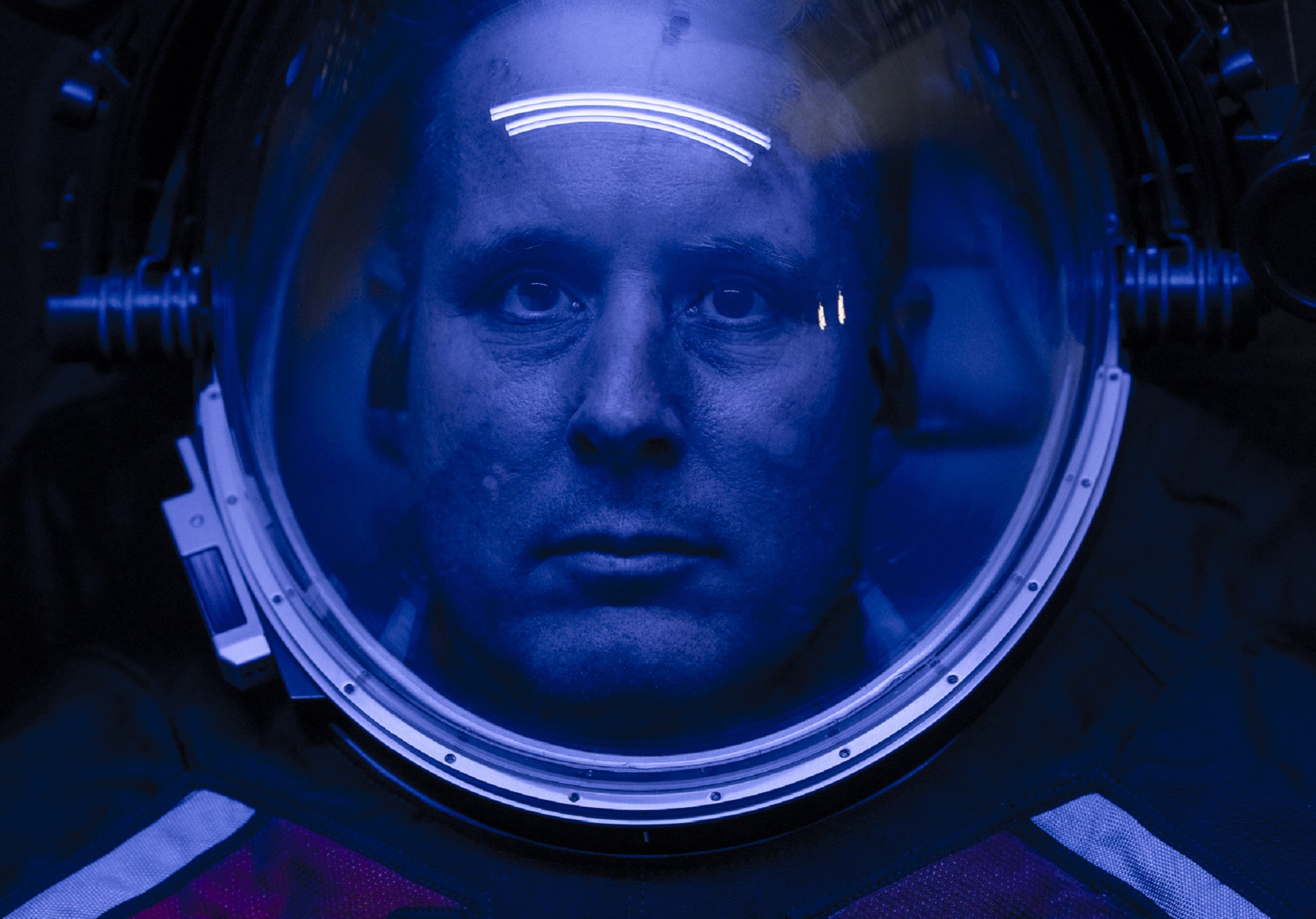

NASA’s wardrobe can best be described as vintage, at least as far as its spacesuits go.
“We have not had a new suit since the suits that we designed for the Space Shuttle, and those suits are currently in use on the space station,” said Vanessa Wyche, director of NASA’s Johnson Space Center. “So 40 years, we’ve been using the same suit based on that technology.”
Wyche spoke at a press conference this morning at Johnson Space Center that revealed NASA’s long-awaited fashion upgrade: the spacesuit that American astronauts will use to walk on the moon in 2025 for the Artemis III mission—and further in the future.
The suit was designed and built by Houston-based company Axiom Space, using some heritage NASA technology, plus a large glass fishbowl helmet and black outer cover with orange and blue highlights. During the livestream, an Axiom engineer walked out on the stage in the redesigned suit and demonstrated the enhanced mobility offered by new joints in the legs, arms, and gloves compared to the Apollo- and Space Shuttle-era suits, twisting, turning, and kneeling down with relative ease. The suits are also designed with modular components in a range of sizes to better fit astronauts of different body shapes and weights.
“We’re developing a spacesuit for a new generation, the Artemis generation, the generation that is going to take us back to the moon and onto Mars,” NASA Associate Administrator Bob Cabana said at the reveal. “When that first woman steps down on the surface of the moon on Artemis III, she’s going to be wearing an Axiom spacesuit.”

NASA had spent years developing its own next generation of spacesuits through its Exploration Extravehicular Mobility Unit (eXMU) program, but in June 2022, the space agency awarded contracts to both Axiom and Collins Aerospace to develop spacesuits for future missions. Unlike the getups still in use on the International Space Station, NASA will only lease the suits, according to Lara Kearney, manager for NASA’s Extravehicular Activity and Human Surface Mobility Program.
“Historically, NASA has owned spacesuits,” Kearney said at the event. The spacesuit contract with Axiom is more like the arrangement NASA makes with SpaceX for flying crew and cargo to the space station aboard Falcon 9 rockets and Dragon spacecraft; the company owns and operates the equipment, and the agency simply pays for services.

Financial arrangements aside, the new spacesuits include an array of improvements and advancements, many derived from NASA research and others unique to Axiom. The suit consists of an inner bladder layer that holds pressurized air in, covered by a restraint layer that holds the shape of the bladder layer, according to Axiom deputy program manager for Extravehicular Activity, Russel Ralston. An outer flight insulation layer provides “cut resistance, puncture resistance, thermal insulation, and a variety of other other other features,” he explained at the event, and consists of multiple layers of material, including aluminized mylar.
The more mobile joints, which will allow astronauts to better handle tools and maneuver around the rocky, heavily shadowed lunar South Pole, were developed at Axiom, Ralston said. Other features, such as the rigid upper torso of the suit—useful for attaching the life support system and tools—and a visor placed further back on the helmet to allow for more visibility, were initially conceived by NASA.
The design also features an entirely new cooling system compared to older suits, will carry a high-definition camera mounted on the helmet, and allows astronauts to enter and exit the suit through a hatch on the back rather than coming as separate lower and upper body segments, as with the current spacesuits.
Importantly, given NASA’s commitment to seeing a female astronaut lead the way back to the moon, the new suits are designed to fit a wide range of body sizes for across sexes, according to Ralston. “We have different sizes of elements that we can swap out—a medium, large and small if you will—for different components,” he said at the press conference. “Then within each of those sizes, we also have an adjustability to where we can really tailor the suit to someone: the length of their leg or the length of their arm.”

Axiom is continuing to build on the spacesuit ahead of the Artemis III mission, including an outer insulation layer that will include pockets and other attachments for tools, and which will be made in white to reflect the harsh sunlight on the moon. The the black, orange and blue cover seen today is just a temporary protective cover to prevent damage to the suit’s inner layers while testing, and, per an Axiom press release, hides “proprietary design” elements.
Despite all the technological advances compared to the Apollo spacesuits of the 1960s and ‘70s, some core technologies are immune to improvement. Asked about whether Axiom found a better way for astronauts to use the restroom while wearing the new shells for up to eight hours on the lunar surface, Ralson didn’t sugarcoat it.
“Yeah, we’re still using diapers in the spacesuit,” he said during the reveal. “They’re just honestly a very effective solution. Sometimes simplicity is best.”
[Related: What happens if you get diarrhea in space?]
NASA’s first mission of its Artemis moon program, Artemis I, was a successful uncrewed test flight of the agency’s massive Space Launch System rocket and Orion spacecraft. Artemis II, which will see four NASA astronauts complete one full orbit around the moon and return to Earth, is currently scheduled to launch in November 2024. Artemis III, which will mark the first time humans have stepped on the moon since 1972, is estimated to launch sometime the following year.
